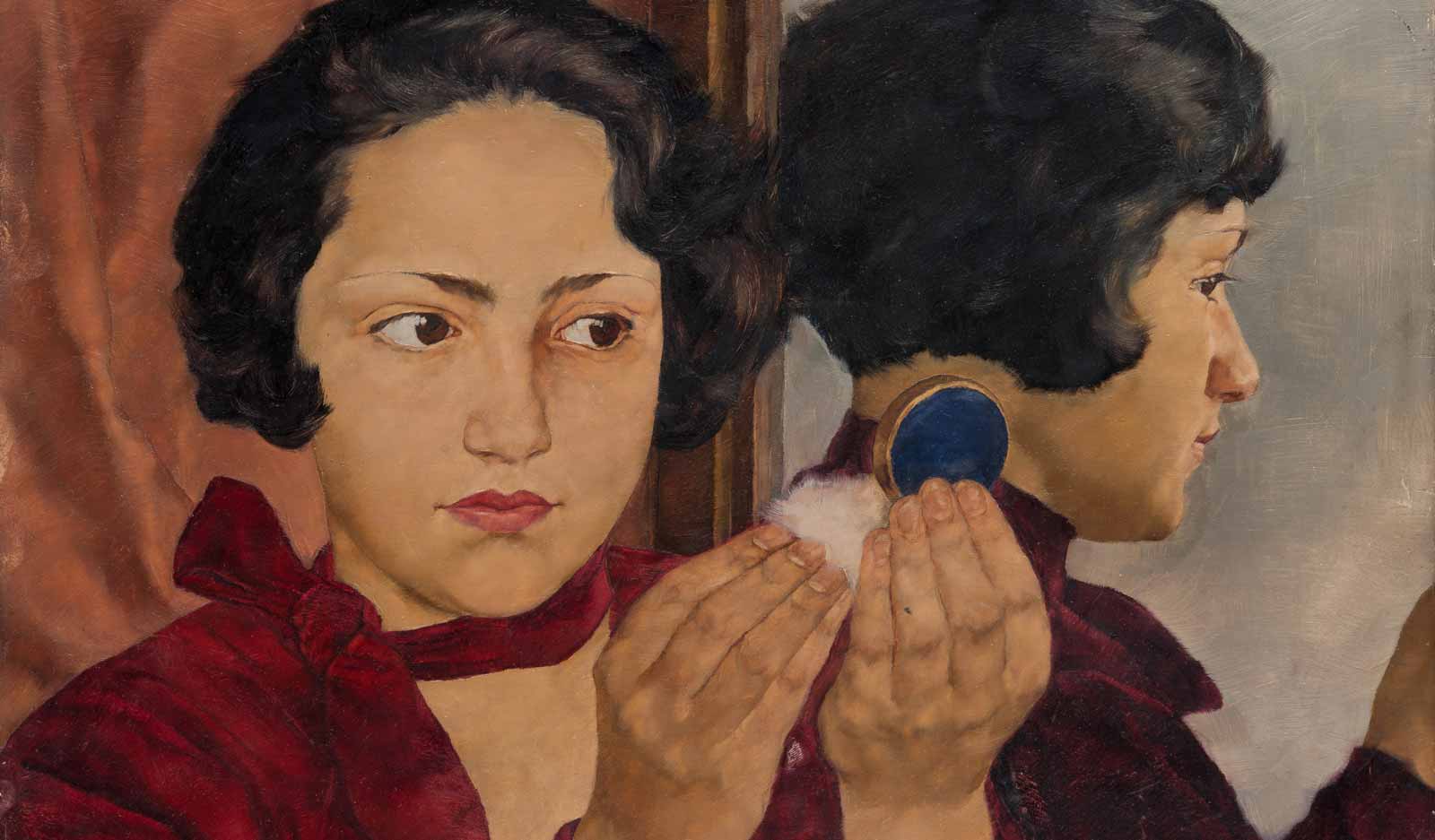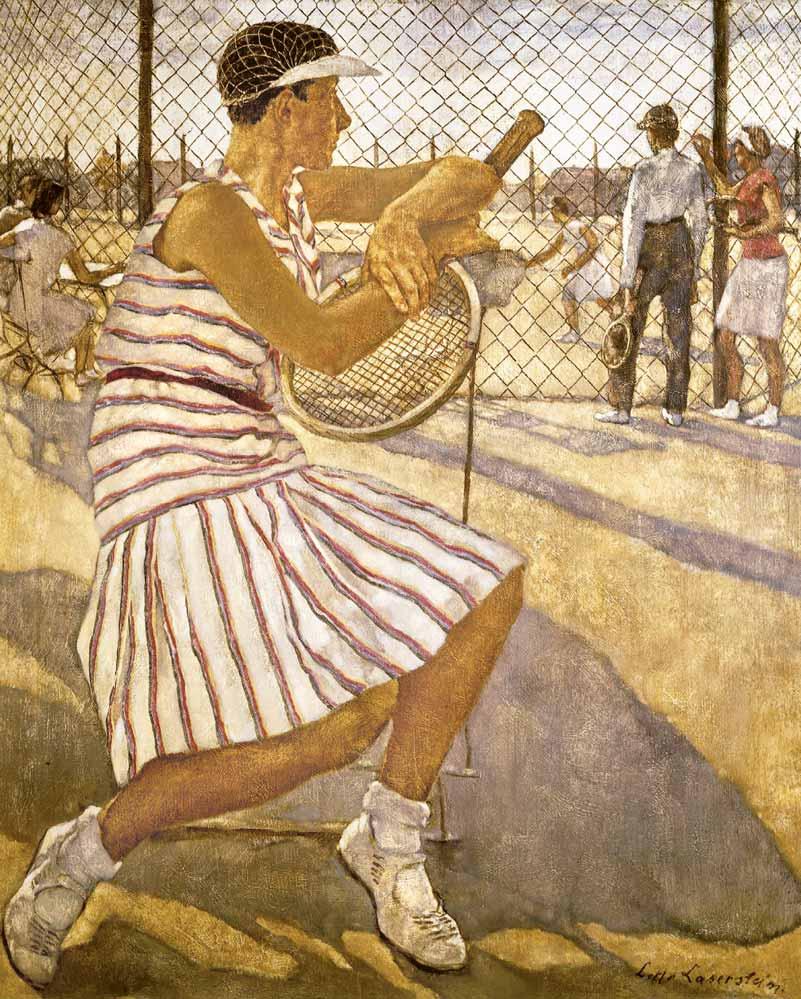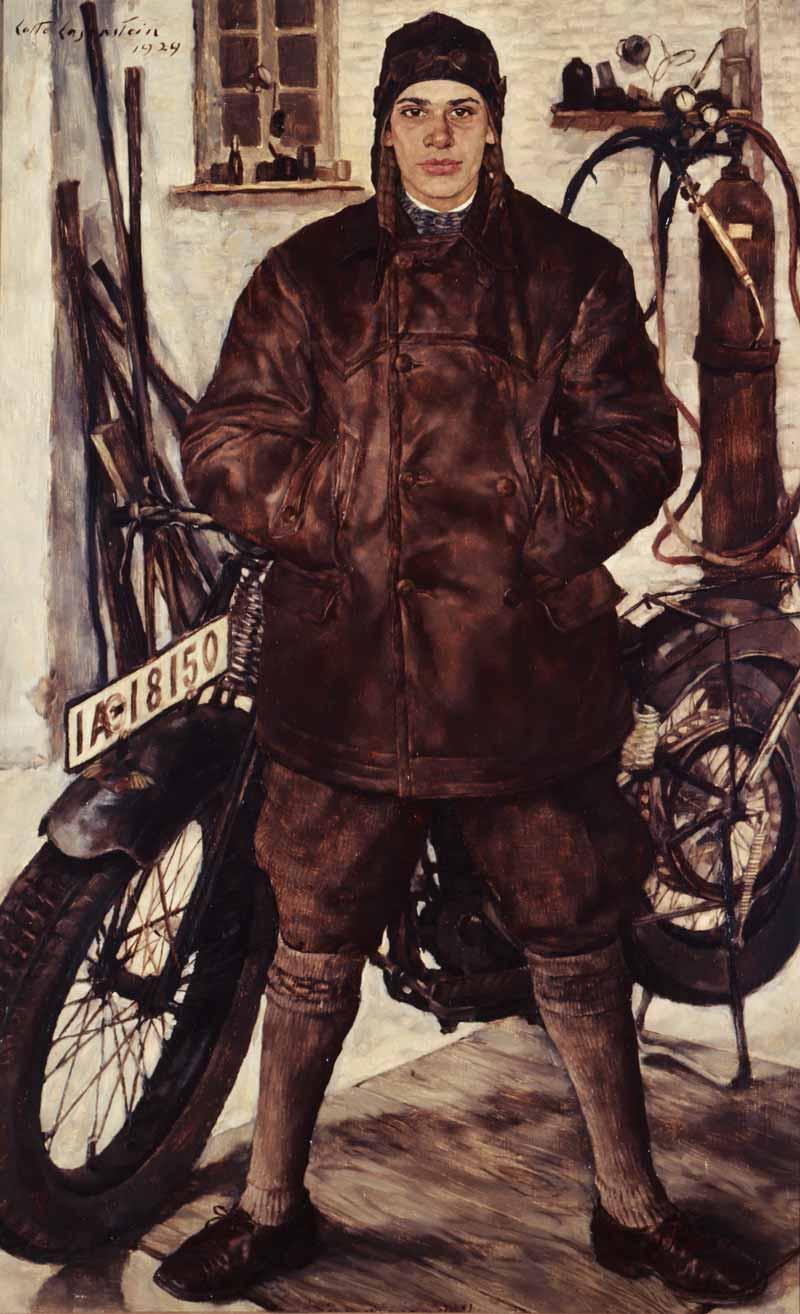The sky over Potsdam’s domes and spires is a sultry gray and white. The five well-dressed young people gathered on a wrought-iron balcony to drink beer and eat bread and fruit at a table covered in a white cloth are lost in their thoughts, gazing into the distance, not talking to each other.
The heavy mood captured in Lotte Laserstein’s oil-on-wood masterpiece, Evening Over Potsdam, reflects the time in which it was painted. The year was 1930, and the Roaring Twenties–a decade in which the artist flourished professionally and received much recognition for her work–had given way to the Great Depression. Laserstein, who was Jewish, was forced by the Nazis to close down her painting school five years later. She fled to Sweden in 1937. Her extraordinary body of work fell into obscurity.
But decades later, Laserstein has been rediscovered. A small gallery exhibition in London in 1987 was followed by a 2003 show at Berlin’s Ephraim Palais organized by the Verborgene Museum (Secret Museum), which specializes in promoting the work of forgotten female artists.
Ever since, leading German museums have been eagerly snapping up Laserstein works: Evening Over Potsdam was acquired by the Berlin Nationalgalerie in 2010. Frankfurt’s Städel Museum purchased her 1928 painting Russian Girl with Compact in 2014, and, two years later, Boy With Kasper Puppet (Wolfgang Karger), painted in 1933.
In part to celebrate these new acquisitions, the Städel Museum mounted the exhibition Lotte Laserstein: Face to Face in 2018. With forty-eight paintings from the artist’s Berlin period and her years in Swedish exile, the show has now moved to the Berlinische Galerie in the German capital. From there, it will travel to Kiel in northern Germany.
Anna-Carola Krausse, the art historian who curated the 2003 exhibition, says part of the reason Laserstein’s work was forgotten is that her realist painting style wasn’t avant-garde and isn’t easy to pigeon-hole. Art history after the war in Germany focussed heavily on the abstract, Expressionist and Cubist works of the first part of the twentieth century. Laserstein was not an Expressionist, nor can she be categorized as a New Objectivity painter.
“The first time I saw her paintings in the early 1990s, I was amazed at the quality of her work,” Krausse says. “But when I approached people about an exhibition, many of them had doubts. There were concerns that she wasn’t avant-garde enough, or that she wasn’t political enough.”






























![DEl Kathryn Barton [Australian b. 1972] the more than human love , 2025 Acrylic on French linen 78 3/4 x 137 3/4 inches 200 x 350 cm Framed dimensions: 79 7/8 x 139 inches 203 x 353 cm](/sites/default/files/styles/image_5_column/public/ab15211bartonthe-more-human-lovelg.jpg?itok=wW_Qrve3)